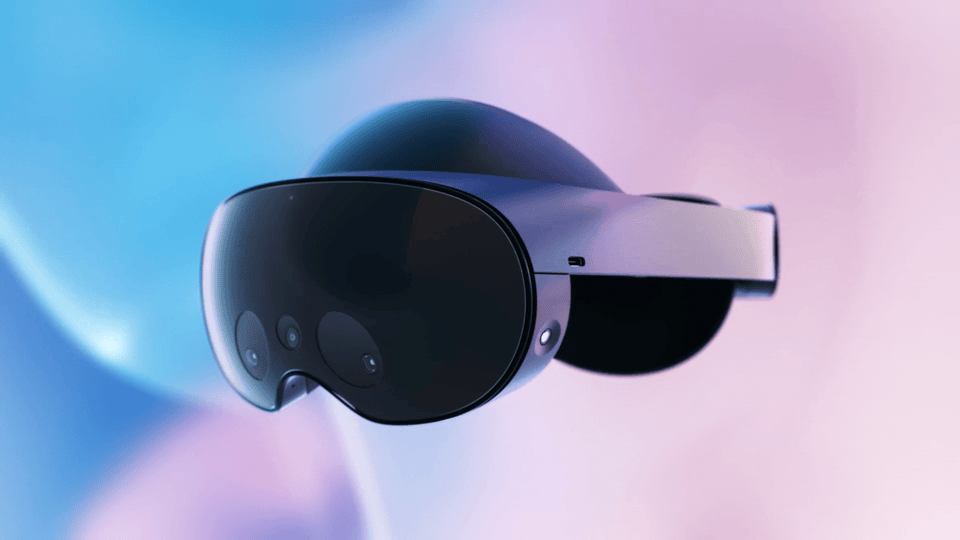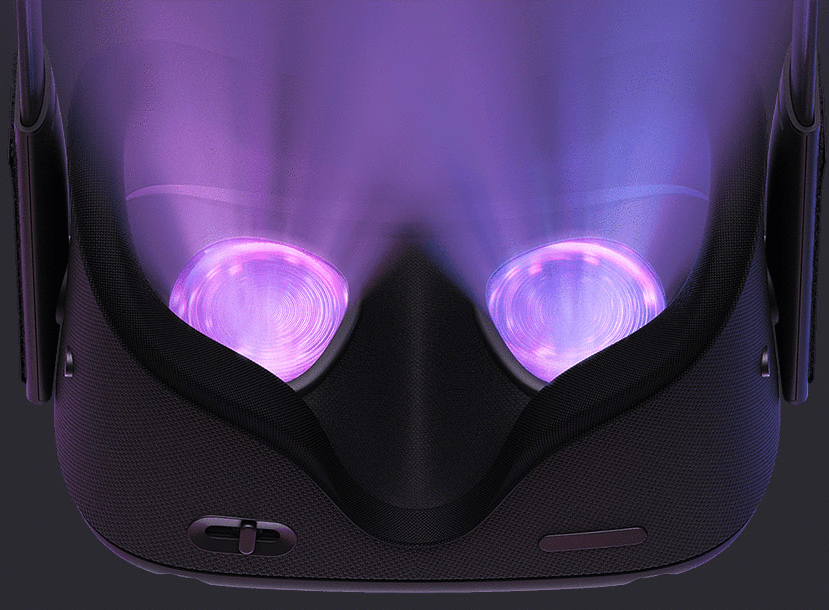The Ultimate VR Headset Guide — Meta Quest Pro and Meta Quest 2 : Features, Benefits
- Saahil mohan
- Jul 19, 2023
- 5 min read
Updated: Feb 23, 2024

Virtual Reality headsets have become a must-have for anyone looking to experience the world of virtual reality today. They enable users to experience a fully-immersive virtual world by delivering high-quality visual and audio experiences.
The importance of VR headsets lies in the fact that they can transport users to various locations and experiences that may otherwise be out of reach. As VR technology advances, headsets become more advanced, offering higher resolution, wider field of view and more sophisticated tracking systems.
As a result, the potential applications of VR headsets are vast and the future of VR is exciting and full of possibilities. Gaming, entertainment, education, healthcare and even therapy - the list goes on and on!
Over the last few years, Virtual Reality has come a long way and Meta Quest Pro and Meta Quest 2 (previously referred to as Oculus Quest 2) are the topmost popular headsets in the market, all designed to provide an immersive experience for users.
In this comprehensive guide, we'll compare the features, benefits, and capabilities of each headset, and discuss potential use cases and the long-term implications of virtual reality and the metaverse. So, if you don’t want to miss out on all the buzz about them today, read on!
The Basics Meta Quest 2 Vs Meta Quest Pro :
Meta Quest Pro is a high-end VR headset designed for enterprise use, while Meta Quest 2 is a mid-range VR headset aimed at the consumer market. Meta Quest 2 is a popular VR headset that combines affordability and high-end features, making it a great option for both casual gamers and professionals. Both of these headsets offer unique features and benefits that make them stand out in the VR market.
Features and Benefits:
Quest 2 is the most affordable and user-friendly headset. It comes with a high-resolution display and a powerful processor, making it an excellent choice for both gaming and productivity. On the other hand, Quest Pro is the most advanced headset, with eye-tracking, hand tracking, and a larger field of view, making it perfect for immersive experiences and professional applications. Let’s break down the key features for an easier comprehension of what each of them has to offer:
Parameters
| Meta Quest 2 | Meta Quest Pro |
Display | LCD | QLED (pancake-style lenses) |
Resolution | 1832×1920 per eye | 1832×1920 per eye |
IPD Adjustment | 3 pre-sets (58, 64, and 66 mm) | 55-75mm increments |
Refresh rate | 72-90 Hz | 72-90 Hz |
Processor | Qualcomm Snapdragon XR2 Gen 1 | Qualcomm Snapdragon XR2+ Gen 1 |
Memory and storage | 6GB RAM and 128-256GB storage | 12GB RAM and up to 256GB storage |
Sensors | Gyroscope, accelerometer, proximity sensor | Ambient light sensor, accelerometer, proximity sensor, gyrometer, barometer, and magnetometer |
Cameras | Four cameras for controller and headset tracking | 5 cameras for room-scale, 2 cameras for face tracking, 3 cameras per controller for self-tracking, 3 cameras for eye tracking |
Audio | 3.5mm jack, integrated stereo speakers, microphone, and spatial audio | Spatial audio, dual 3.5mm jacks, integrated stereo speakers, and a microphone |
Connectivity | Wi-Fi, Bluetooth 5, and USB Type C Gen 1 | Wi-Fi 6E, Bluetooth 5.2, and USB Type C gen 2 |
Face/eye/hand tracking | Hand tracking | Face, eye, and hand tracking |
Comparison: Display and Performance
The Quest Pro offers the same resolution as the Meta Quest 2, with a 10 º larger field of view and improved optic technology. It also supports QLED lenses with over 500 individual zones of local dimming, as well as its own specialized pancake lenses that offer superior visual quality without sacrificing ergonomics.
Additionally, the Quest Pro offers a wider color gamut and 37% more PPI than the Quest 2, and developers can add foveated rendering to the Quest Pro for enhanced performance and increased resolution by focusing on the user's eye position.
The Quest Pro is significantly faster than the Quest 2 when it comes to generating and streaming content, with up to 50% more processing power. This is due to the specially enhanced Snapdragon chip that powers the device. The Quest 2 is still incredibly fast and efficient when it comes to preserving high frame rates, but it is not as sophisticated as the Quest Pro in terms of performance.
The Quest Pro is primarily designed to provide users with the ability to create a portable office space, allowing for more efficient VR experiences. Additionally, the Quest Pro offers an improved pass-through experience, with color visuals, which is ideal for mixed reality applications.
Comparing Comfort and Ergonomics:

It is uncertain whether the Quest Pro is comfortable to use for extended periods of time; however, it is more balanced than its predecessor, with the battery positioned on the back to reduce visor weight.
Additionally, the lenses are more comfortable to use, with continuously adjustable lenses that can be optimized to fit the user's eyes. The Quest 2 has only three positions for IPD adjustment, and lens distance cannot be adjusted.
The Quest Pro also features pancake lens technology that reduces the display's thickness by approximately 40% compared to the Quest 2. Moreover, the Quest Pro offers greater contrast and more vibrant colors, which could potentially improve the viewing experience.
Both the Quest 2 and Quest Pro offer hand-tracking capabilities, but the Quest 2 is somewhat limited compared to the Pro. The Quest 2 relies heavily on controller tracking conducted by the headset, so your hands need to remain in view of the headset’s cameras.
The Quest Pro controllers are equipped with their own built-in cameras, which allow for better gesture monitoring and controls. Plus, each controller has new pinch sensors, improved haptics, and the ability to use your controller as a stylus when drawing on virtual whiteboards.
The Quest Pro controllers have their own included dock for charging, or they can be powered by a proprietary cable, while the Quest 2 controllers run on standard double A batteries.
Use Cases:
The Meta Quest 2 is best suited for gamers who enjoy fast-paced action games, while the Meta Quest Pro is ideal for immersive experiences and professional applications, such as training simulations and architectural visualizations.
Limitations:
While Meta Quest Pro and Meta Quest 2 have revolutionized virtual reality, they still have their limitations. For example, both the headsets require a strong internet connection to function optimally, which can be a challenge in areas with poor connectivity. Additionally, the headsets have limited battery life, which can be an issue for longer VR sessions.

Moreover, the field of view in both headsets is still limited, which can take away from the immersive experience. Finally, some users may experience motion sickness or eye strain when using VR headsets for extended periods. Despite these limitations, the Meta Quest Pro and Meta Quest 2 remain some of the most advanced VR headsets available today.
Long-Term Implications:
Virtual reality and the metaverse have the potential to revolutionize the way we work, learn, and play. As more people adopt VR technology, we can expect to see new applications emerging, such as virtual classrooms, remote work environments, and social experiences.
The Meta Quest Pro and Meta Quest 2 are just the beginning of what promises to be an exciting journey into the world of virtual reality.
With the innovative solutions that Bricks and Pixels offers, your Virtual Reality visions are sure to come alive! Our services like 360-degree VR Tours and VR Applications engage the senses of our clients and provide dynamic perspectives so that they make informed decisions.
You, too, can be a part of this enthralling journey if you wish to take your business to a whole new level. You can get more information on our website.
Conclusion:
To sum up, Meta Quest Pro and Meta Quest 2 are excellent headsets that offer unique features and advantages. Choosing which one to purchase depends on your needs and preferences.
Regardless of whether you are a gamer, professional, or simply looking to immerse yourself in the virtual world, there is a headset available that is suitable for you. As virtual reality technology advances, we can anticipate a future that is more immersive, interconnected, and thrilling than ever before.



Useful Info